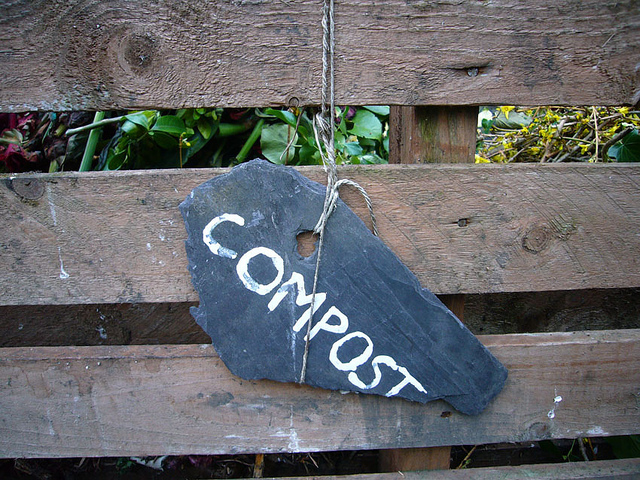Climate change gets me down sometimes, and a sense of powerlessness invades my mind.
During these moments, I try to remember that there are positive steps I can take that are damage-reversing—and then I go play in the dirt.
I sow seeds, toss compost like confetti, spread bark chips and gleefully plant as many plants as possible. Because one of the simplest ways to reverse climate change and counteract the effects of global warming lies in the soil beneath our feet.
It all comes down to carbon.
Carbon molecules are essential for life on earth. They exist in its atmosphere, bodies of water, soils and geology, as well as in each of the organisms on the earth’s surface. They pass from one sphere to another during carbon exchanges, maintaining a delicate equilibrium that we call the Carbon Cycle.
Human activities have altered the global carbon cycle. For years, we have extracted carbon from the ground and have released it into the biosphere through the combustion of fossil fuels and the overexposure of soils. This has disrupted the carbon cycle’s balance. Consequentially, it has altered weather patterns, created an environmental warming trend and has affected the chemistry of the earth’s oceans.
In fact, today’s studies show that there is 30% more carbon dioxide in the air than existed 150 years ago. In order to restore the natural equilibrium, we need to put some of the carbon in the atmosphere back in to the soil—and that’s where plants come in.
Plants pull carbon from the air. Through photosynthesis, they convert carbon molecules into sugars and starches that they then exude through their roots. Soil microbes consume these substances and humus-rich soil then absorbs and stores carbon molecules.
Virgin soils are humate-rich, but once soil is tilled and exposed, both the sun and air oxygenate humic acid molecules and destroy them. Pesticides and chemical fertilizers also kill humates. This results in the release of vast amounts of carbon into the air. Airborne carbon can bond with oxygen to form CO2, a greenhouse gas.
“We hear a lot about fossil fuels being responsible for climate change, but only 25% is actually attributed to fossil fuel combustion,” explains California-based soil specialist Bill Palmisano. “The majority of global warming gasses (about 51%) come from animal agriculture in the form of deforestation, feed crops that are grown unsustainably, soil erosion, and loss of humus.”
One of the most efficient ways to raise carbon levels in soils to increase the humus content. Humus is a complex substance produced by the decomposition of organic compounds in plants and animal biproducts. Humic acid molecules are large and stable, and they’re able to hold onto large amounts of carbon in undisturbed soil for hundreds of years.
Composting—which involves returning dead plants to the soil—produces humus. Cover crops also contribute to humus production while also reducing soil exposure and erosion. Plants, both dead and alive, nourish the earth and offer a natural solution to restoring balance to the Carbon Cycle.
Returning carbon to the soil recently became part of the global response to the climate crisis at the UN Climate Change Conference in Paris. Together, countries, businesses and NGOs committed to uphold an array of carbon-conscious policies. In doing so, they brought international focus to the importance of carbon sequestering as part of the solution to stop climate change.
World leaders aren’t the only ones responsible for taking action though. Each of us can take steps to return carbon to the earth. We can tend gardens, compost food waste and plant perennials. And those of us without access to a yard or garden can also participate. No dirt? No problem!
Here are a multitude of carbon-positive steps that each of us can take within the space of our homes:
Support small farms and buy food at a CSA or Farmers Market. In doing so, you are investing in your health as well as the health of your community’s soil.
Fill your space with houseplants. They’ll pull carbon from the air in your home and eventually return it to the ground when they die.
Create a worm bin. A small colony will decrease your food waste by 98% and will produce incredibly rich compost. Just fill a box with damp soil, newspaper or cardboard and worms. Keep them moist and well-fed with your food scraps, and return them to nature when you’re ready.
Grow sprouts. Place a mason jar with your favorite sprout seeds and a cheesecloth lid in a windowsill. Grow sprouts that extract carbon from the air and nourish your body.
Returning carbon to our soils is not only an important part of the climate change solution, it’s one that each of us can joyfully take part in. Scatter seeds with abandon, my friends, and grow something green. Leaf by leaf we can restore the earth’s equilibrium. The future belongs to those of us willing to get our hands dirty.
.
Relephant:
Composting 101: Turning Dirt into Black Gold.
Author: Laura Sanchez
Apprentice Editor: Lindsay Carricarte/Editor: Yoli Ramazzina
Photo: Flickr/cea; Flickr/Kirsty Hall







Read 0 comments and reply